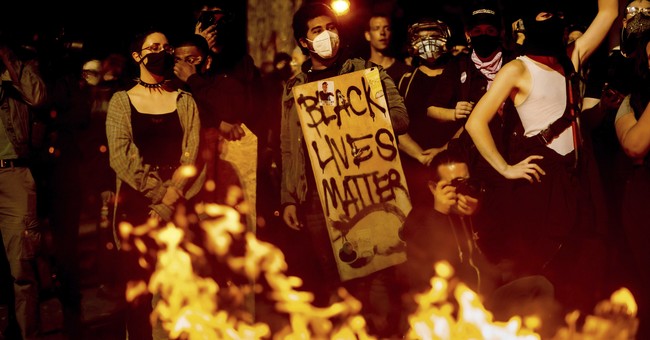AUGUST 13, 2020, by Bernard J. Wolfson, Kaiser Health News
https://medicalxpress.com/news/2020-08-pandemic-hampers-reopening-joint-gold.html

Credit: Pixabay/CC0 Public Domain
Dr. Ira Weintraub, a recently retired orthopedic surgeon who now works at a medical billing consultancy, saw a hip replacement bill for over $400,000 earlier this year.
"The patient stayed in the
hospital 17 days, which is only 17 times normal. The bill got paid," mused Weintraub, chief medical officer of Portland, Oregon-based WellRithms, which helps self-funded employers and workers' compensation insurers make sense of large, complex medical bills and ensure they pay the fair amount.
Charges like that go a long way toward explaining why hospitals are eager to restore joint replacements to pre-COVID-19 levels as quickly as possible—an eagerness tempered only by safety concerns amid a resurgence of the coronavirus in some regions of the country. Revenue losses at hospitals and outpatient
surgery centers may have exceeded $5 billion from canceled knee and hip replacements alone during a roughly two-month hiatus on elective procedures earlier this year.
The cost of joint replacement surgery varies widely—though, on average, it is in the tens, not hundreds, of thousands of dollars. Still, given the high and rapidly growing volume, it's easy to see why joint replacement operations have become a vital chunk of revenue at most U.S. hospitals.
The rate of knee and hip replacements more than doubled from 2000 to 2015, according to inpatient discharge data from the Agency for Healthcare Research and Quality. And that growth is likely to continue: Knee replacements are expected to triple between now and 2040, with hip replacements not far behind, according to projections published last year in the Journal of Rheumatology.
Joint procedures are usually not emergencies, and they were among the first to be scrubbed or delayed when hospitals froze elective surgeries in March—and again in July in some areas plagued by renewed COVID-19 outbreaks. Loss of the revenue has hit hospitals hard, and regaining it will be crucial to their financial convalescence.
"Without orthopedic volumes returning to something near their pre-pandemic levels, it will make it difficult for
health systems to get back to anywhere near break-even from a bottom-line perspective," said Stephen Thome, a principal in health care consulting at Grant Thornton, an advisory, audit and tax firm.
It's impossible to know exactly how much knee and hip replacements are worth to hospitals, because no definitive data on total volume or price exists.
But using published estimates of volume, extrapolating average commercial payments from published Medicare rates based on a study, and making an educated guess of patient coinsurance, Thome helped KHN arrive at an annual market value for American hospitals and surgery centers of between $15.5 billion and $21.5 billion for knee replacements alone.
That suggests a revenue loss of $1.3 billion to $1.8 billion per month for the period the surgeries were shut down. These figures include ambulatory surgery centers not owned by hospitals, which also suspended most operations in late March, all of April and into May.
If you add hip replacements, which account for about half the volume of knees and are paid at similar rates, the total annual value rises to a range of $23 billion to $32 billion, with monthly
revenue losses from $1.9 billion to $2.7 billion.
The American Hospital Association projects total revenue lost at U.S. hospitals will reach $323 billion by year's end, not counting additional losses from surgeries canceled during the current coronavirus spike. That amount is partially offset by $69 billion in federal relief dollars hospitals have received so far, according to the association. The California Hospital Association puts the net revenue loss for hospitals in that state at about $10.5 billion, said spokesperson Jan Emerson-Shea.
Hospitals resumed joint replacement surgeries in early to mid-May, with the timing and ramp-up speed varying by region and hospital. Some hospitals restored volume quickly; others took a more cautious route and continue to lose revenue. Still others have had to shut down again.
At the NYU Langone Orthopedic Hospital in New York City, "people are starting to come in and you see the operating rooms full again," said Dr. Claudette Lajam, chief orthopedic safety officer.
At St. Jude Medical Center in Fullerton, California, where the coronavirus is raging, inpatient joint replacements resumed in the second or third week of May—cautiously at first, but volume is "very close to pre-pandemic levels at this point," said Dr. Kevin Khajavi, chairman of the hospital's orthopedic surgery department. However, "we are constantly monitoring the situation to determine if we have to scale back once again," he said.
In large swaths of Texas, elective surgeries were once again suspended in July because of the COVID-19 resurgence. The same is true at many hospitals in Florida, Alabama, South Carolina and Nevada.
The Mayo Clinic in Phoenix suspended nonemergency
joint replacement surgeries in early July. It resumed outpatient replacement procedures the week of July 27, but still has not resumed nonemergency inpatient procedures, said Dr. Mark Spangehl, an
orthopedic surgeon there. In terms of medical urgency, joint replacements are "at the bottom of the totem pole," Spangehl said.
In terms of cash flow, however, joint replacements are decidedly not at the bottom of the totem pole.
They have become a cash cow as the number of patients undergoing them has skyrocketed in recent decades.The volume is being driven by an aging population, an epidemic of obesity and a significant rise in the number of younger people replacing joints worn out by years of sports and exercise.It's also being driven by the cash. Once only done in hospitals, the operations are now increasingly performed at ambulatory surgery centers—especially on younger, healthier patients who don't require hospitalization.
The surgery centers are often physician-owned, but private equity groups such as Bain Capital and KKR & Co. have taken an interest in them, drawn by their high growth potential, robust financial returns and ability to offer competitive prices.
"(G)enerally the savings should be very good—but I do see a lot of outlier surgery centers where they are charging exorbitant amounts of money - $100,000 wouldn't be too much," said WellRithms' Weintraub, who co-owned such a surgery center in Portland.
Fear of catching the coronavirus in a hospital is reinforcing the outpatient trend. Matthew Davis, a 58-year-old resident of Washington, D.C., was scheduled for a hip replacement on March 30 but got cold feet because of COVID-19, and canceled just before all elective surgeries were halted. When it came time to reschedule in June, he overcame his reservations in large part because the surgeon planned to perform the procedure at a free-standing surgery center.
"That was key to me—avoiding an overnight hospital stay to minimize my exposure," Davis said.
"These joint replacements are almost industrial-scale. They are cranking out joint replacements 9-to-5. I went in at 6:30 a.m. and I was walking out the door at 11:30."Acutely aware of the financial benefits, hospitals and surgery clinics have been marketing joint replacements for years, competing for coveted rankings and running ads that show healthy aging people, all smiles, engaged in vigorous activity.
However, a 2014 study concluded that one-third of knee replacements were not warranted, mainly because the symptoms of the patients were not severe enough to justify the procedures.
"The whole marketing of health care is so manipulative to the consuming public," said Lisa McGiffert, a longtime consumer advocate and co-founder of the Patient Safety Action Network. "People might be encouraged to get a knee replacement, when in reality something less invasive could have improved their condition."
McGiffert recounted a conversation with an orthopedic surgeon in Washington state who told her about
a patient who requested a knee replacement, even though he had not tried any lower-impact treatments to fix the problem. "I asked the surgeon, 'You didn't do it, did you?' And he said, 'Of course I did. He would just have gone to somebody else.'"
Recommend this post and follow TCW


























































